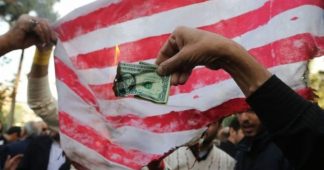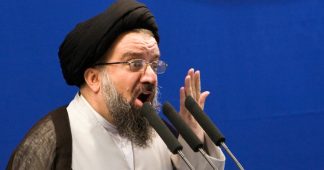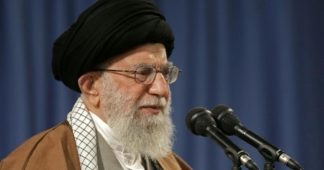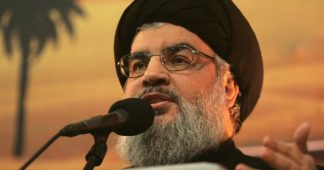by Kirill Kurevlev
Jun 7, 2021
Mohtashamipur, a close follower of Iran’s late Supreme Leader Ayatollah Ruhollah Khomeini, was reportedly responsible for making alliances with Muslim groups across the Middle East in the 1970s while serving on behalf of the former Iranian leader.
Ali Akbar Mohtashamipur, a Shiite cleric and the alleged founder of Lebanese Shia Islamist group Hezbollah, died of the novel coronavirus on Monday at a hospital in northern Tehran, the Iranian IRNA news agency reported.
According to the report, the death of the cleric, who was about 74-years-old, the exact date of his birth is unknown, was confirmed by his daughter.
Iranian Supreme Leader Ali Hosseini Khamenei and President Hassan Rouhani, among many others, have expressed their condolences on the cleric’s death.
Mohtashamipur helped build the paramilitary Revolutionary Guard in Iran after the Islamic Revolution of 1979, and as ambassador to Syria in the 1980s, he allegedly brought the force into the region to assist in the establishment of Hezbollah.
According to his obituary, written by IRNA, after being arrested in Iraq, Mohtashamipur made his way to Ayatollah Khomeini’s residence in exile outside of Paris. They later both returned to Iran during the Islamic Revolution.
Khomeini dispatched Mohtashamipur to Syria in 1982, while the country was ruled by then-president Hafez Assad. Mohtashamipur supervised the millions of dollars that flowed into the region to pay the Revolutionary Guard’s operations, according to the Associated Press.
Lebanon, which was occupied by Syria at the time and had its troops stationed there, was invaded by Israel in 1982 as Israel pursued the Palestinian fighting groups in the country. Mohtashamipur reportedly orchestrated the increase of aid towards the Shiite groups in the country. That money reportedly aided the formation of a new organization in Lebanon, whose name translates as “the Party of God.”
Mohtashamipur is characterized as “one of the founders of Hezbollah in Lebanon” in his IRNA obituary, which also blamed Israel for a bombing that wounded him.
“During his embassy, he formed Islamic groups, especially the Lebanese Hezbollah, as well as resistance cells. This factor caused the Zionists to send him an explosive package in February 1984, and thus he was the target of a terrorist incident,” the obituary reads.
Israeli intelligence allegedly tried to assassinate Mohtashamipur by sending him a package on Valentine’s Day in 1984, containing a bomb packed within a book on Shiite holy locations in Iran and Iraq, according to reports.
It was reported that when Mohtashamipur opened the book, the bomb went off, ripping off his right hand and two fingers from his left. The cleric survived the blast, rising to become Iran’s interior minister and serving in parliament as a conservative MP before joining the reformists in 2009.
According to media reports, he gradually adopted the cause of the reformists in Iran in his later years, intending to transform the nation’s theocracy from within. In the aftermath of then-President Mahmoud Ahmadinejad’s 2009 re-election, he endorsed opposition leaders Mir Hossein Mousavi and Mahdi Karroubi at Iran’s Green Movement rallies.
After the disputed election in Iran, the cleric, who donned a black turban that marked him as a direct descendent of Islam’s Prophet Muhammad in Shiite tradition, had reportedly been residing in the Shiite holy city of Najaf, Iraq, over the past years.
Published at sputniknews.com











